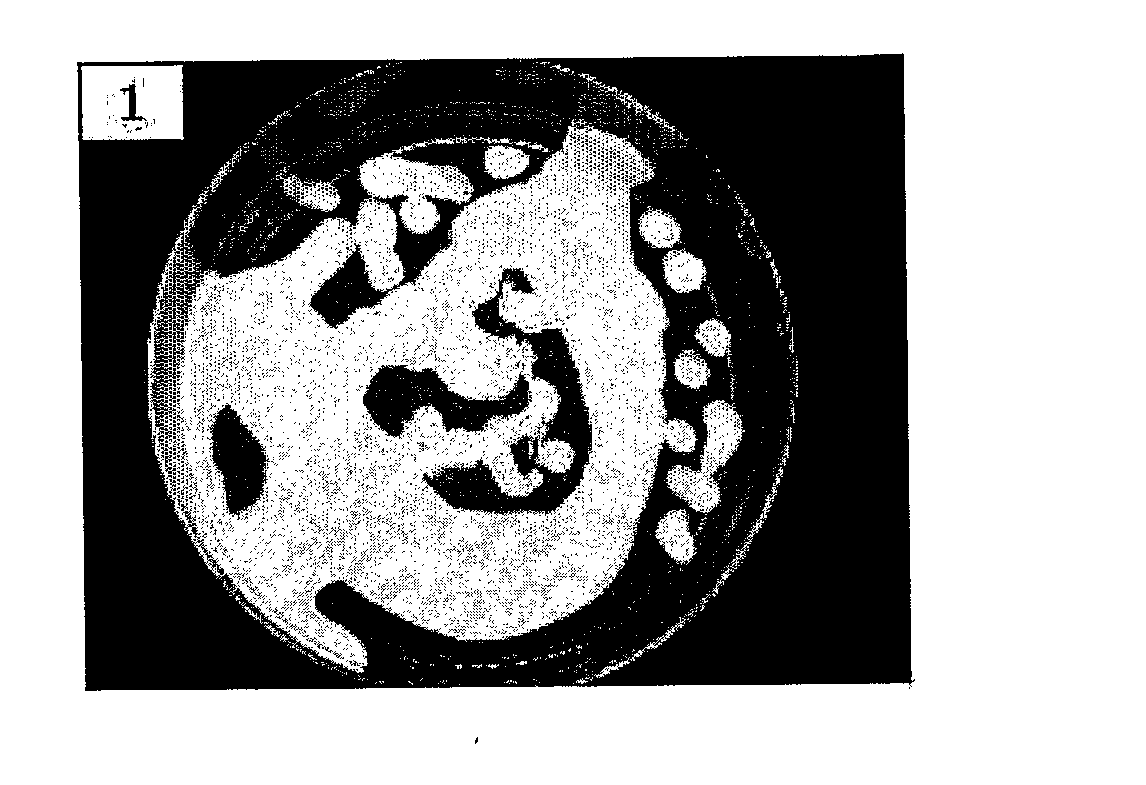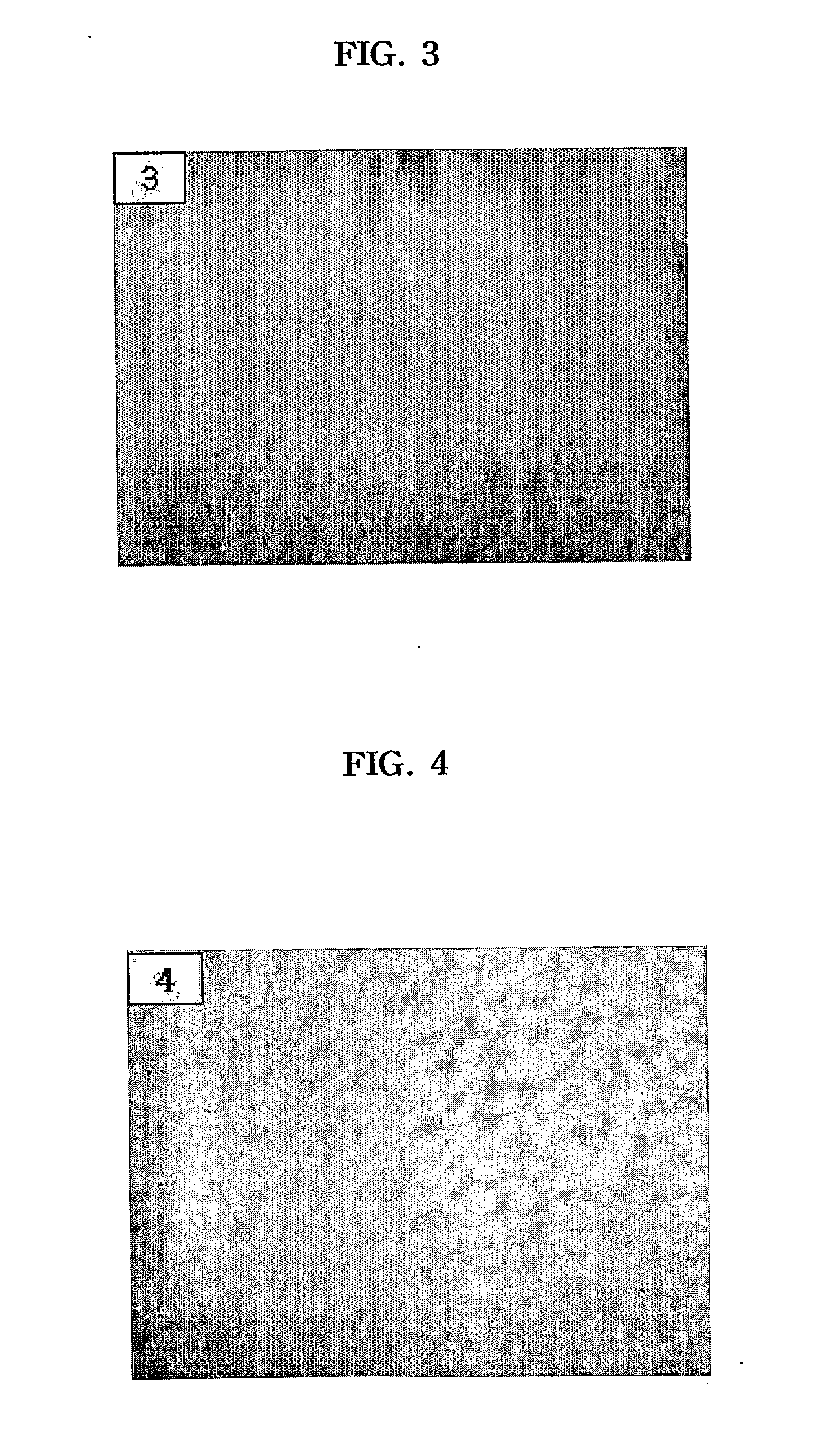Method For Preparing Radioactive Film
a radioactive film and film technology, applied in the field of radioactive film preparation, can solve the problems of low treatment efficiency, skin irritation, and method not suitable for mass production, and achieve the effects of uniform thickness, low residual solvent amount, and low amount of residual solven
- Summary
- Abstract
- Description
- Claims
- Application Information
AI Technical Summary
Benefits of technology
Problems solved by technology
Method used
Image
Examples
examples [UNK]
EXAMPLES 1˜24
Preparation of Holmium-166(165) Polyurethane Film
1) Preparation of Holmium 165-Polyurethane Film
[0048] Preparatory solutions of holmium 165-polyurethane film are prepared separately according to the composition of Table 1.
[0049] Polyurethane elastomer is completely dissolved in a mixture solution of dimethylformamide (DMF) and tetrahydrofuran (THF), and then holmium nitrate (165Ho(No3)3.5H2O) is added to the solution. After holmium nitrate is completely dissolved, the mixture is left at room temperature until bubbles of the mixed solution disappear. A holmium 165-polyurethane film is prepared by coating a holmium 165-polyurethane solution prepared in accordance with each example embodiment on a release paper by a coater (Laboratory Drawdown coater LC-100, Chem Instruments Co.) with a predetermined thickness (100˜1500 μm), drying for few seconds by a heat-gun and then completely dried at room temperature. The dried film has a thickness of 20-200 μm.
2) Preparation o...
experimental example 1
Determination of the Concentration of Polyurethane Elastomer
[0051] The optimum concentration of polyurethane elastomer is determined by comparing dissolving time of polyurethane elastomer, uniformity of a film, and drying time in the preparation of film having the composition of Examples 1˜24. The images of each film are taken by a digital camera (Casio EX-Z40) and shown in FIGS. 1 to 7.
[0052] Films are prepared in accordance with Examples. The film with a uniform thickness is not obtained with a preparatory solution containing a polyurethane elastomer of less than 13 weight % (Examples 1˜4) because the fluidity of preparatory solution is high due to low concentration and inclination of solution occurs partially before drying when coating to a predetermined thickness (FIGS. 2 and 3). In order to obtain a dried film with the same thickness as a film prepared from high concentration solution, thick coating of the preparatory solution, long drying time, and use of a larger amount of ...
experimental example 2
Determination of Concentration of Stable Nuclide
[0056] The optimum concentration of a stable nuclide compound is determined by observing uniformity of a film according to the concentration of a stable nuclide in the film prepared in Examples. The amount of a stable nuclide compound is 0.1˜14.5 weight % for the total weight of a solvent according to the required stable nuclide, considering radiation dose after radioactive labeling. In the cases that the amount is in excess of 14.5 weight % (Examples 8, 11, 15, 17, and 18), coagulation occurs in a solution when dissolving with a polyurethane elastomer, and the coagulated solution is coated unevenly when this solution is used to prepare a film (FIG. 7). Namely, when the content of the stable nuclide is in excess of 14.5 weight %, it is difficult to be used for the preparation of a film because the phenomenon interrupting the film formation of a base occurs.
PUM
| Property | Measurement | Unit |
|---|---|---|
| Percent by mass | aaaaa | aaaaa |
| Percent by mass | aaaaa | aaaaa |
| Thickness | aaaaa | aaaaa |
Abstract
Description
Claims
Application Information
 Login to View More
Login to View More - R&D
- Intellectual Property
- Life Sciences
- Materials
- Tech Scout
- Unparalleled Data Quality
- Higher Quality Content
- 60% Fewer Hallucinations
Browse by: Latest US Patents, China's latest patents, Technical Efficacy Thesaurus, Application Domain, Technology Topic, Popular Technical Reports.
© 2025 PatSnap. All rights reserved.Legal|Privacy policy|Modern Slavery Act Transparency Statement|Sitemap|About US| Contact US: help@patsnap.com



